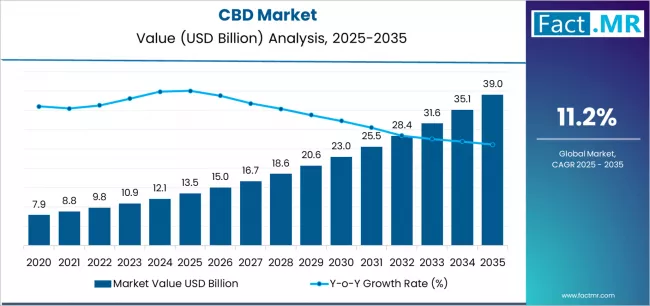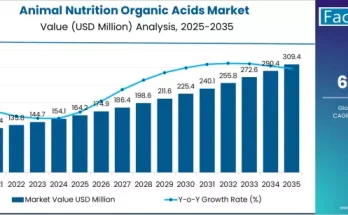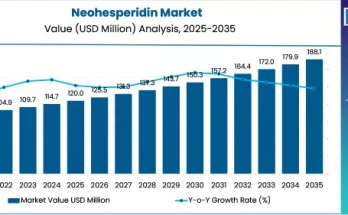The cannabidiol (CBD) market has evolved rapidly over recent years, emerging as one of the most dynamic segments in the wellness, pharmaceutical, and consumer goods industries. The global CBD market is poised for continued and significant expansion in the decade ahead.
Market Size & Growth Forecast
The global CBD market is projected to grow significantly over the next decade, reflecting strong and sustained demand. This growth underscores how CBD is no longer a niche wellness trend — it’s maturing into a mainstream market with diverse applications.
Why Is the CBD Market Growing?
Several key factors are driving this expansion:
- Regulatory Acceptance & Legalization
Greater regulatory clarity and legalization of hemp-derived products across regions are making CBD more accessible. As governments refine their frameworks, more companies are entering the market, and consumers are feeling safer using CBD products. - Consumer Awareness & Wellness Trends
There is a rising global appetite for natural wellness solutions. CBD is often perceived as a gentle, plant-based alternative for managing stress, sleep issues, pain, and inflammation. This perception is bolstered by increasing consumer education and the shift toward preventive healthcare. - Product Innovation
Rather than being limited to oils and tinctures, CBD is now infused into a wide variety of formats: topicals, edibles, beverages, pet products, cosmetics, and more. This product diversification helps tap into different consumer segments and use-cases. - Improved Quality & Testing
As the market matures, manufacturers are emphasizing quality control, third-party testing, and traceability. Certificates of Analysis (COAs), standardized extraction, and rigorous quality assurance are becoming industry norms — all helping to build consumer trust.
Market Segmentation: Products, Channels & Types
To understand how the CBD market is structured, it helps to look at how it is segmented by product type, distribution channel, and spectrum type.
By Product Type
- Tinctures / Oils: These remain the most dominant format. Their popularity is driven by precise dosing, sublingual delivery, and high consumer trust.
- Topicals: Creams, balms, and lotions are growing steadily, especially for skin care, pain relief, and localized applications.
- Gummies / Edibles: These are increasingly popular due to their convenience, taste, and appeal to wellness-focused consumers.
By Distribution Channel
- Dispensary / Licensed Retail: This channel holds the largest share of CBD sales. Licensed retailers provide regulatory compliance, product education, and a trusted point of purchase for consumers.
- Online: E‑commerce is a fast-growing channel for CBD, especially in regions where regulations allow direct-to-consumer sales.
- Mass Retail: As CBD becomes more mainstream, its presence is expanding in larger retail formats, depending on local regulation.
By Spectrum Type
Spectrum refers to how much of the cannabis plant’s compounds remain in the product:
- Full Spectrum: Contains CBD plus trace cannabinoids and possibly trace THC.
- Broad Spectrum: Similar to full spectrum, but with THC removed.
- Isolate: Pure CBD, without other cannabinoids — often chosen for its purity and predictability.
Regional Dynamics & Global Trends
Several regional trends are shaping the CBD market’s future:
- North America: Remains the global leader. Strong regulatory foundations, large consumer base, and well-developed cannabis infrastructure drive growth.
- Europe: Growing steadily, with countries like Germany and the UK playing a significant role. Regulatory frameworks and consumer acceptance are improving, and wellness applications are gaining traction.
- Asia-Pacific: Emerging as a high-potential region. While cannabis regulation varies across countries, increasing investment in hemp-derived CBD and rising health-consciousness are creating opportunities.
On a country level, the U.S. is expected to maintain a strong lead over the next decade. Other notable markets include Mexico, Germany, and France.
Key Drivers, Challenges & Trends
Key Drivers
- Wellness & Preventive Health: More consumers view CBD as an active part of wellness routines. Whether for stress management, sleep, or chronic pain, CBD is gaining trust.
- Regulatory Momentum: As governments around the world define clearer rules around hemp cultivation, extraction, testing, and sales, CBD companies are able to scale more confidently.
- Innovation Across Formats: Brands are expanding beyond traditional oils into edibles, topicals, pet products, and more, helping highway into different market verticals.
- Quality Assurance: Emphasis on third-party testing, COAs, and standardized production gives consumers confidence and helps reduce risk for regulatory non-compliance.
Challenges & Restraints
- Regulatory Complexity: Regulatory frameworks remain inconsistent across regions and even within countries. The legal status of CBD (hemp-derived vs. marijuana-derived) can vary greatly.
- Quality Standardization: Not all CBD products are created equal. Variability in potency, contamination risk, and testing rigor can pose significant trust and safety issues.
- Consumer Education: While awareness is rising, many consumers still lack understanding about dosing, effects, and how to choose high-quality products.
- Pricing Pressure: As more players enter, competition may drive down prices, which could squeeze margins, especially for smaller or newer brands.
Emerging Trends
- Mainstream Retail Integration: Increasing adoption of CBD in large retail chains, pharmacies, and big-box stores.
- Clinical Validation: More clinical studies supporting therapeutic uses of CBD will help in medical acceptance.
- Sustainability & Traceability: Brands investing in sustainable cultivation practices, blockchain-based traceability, and greener extraction methods.
- Niche Applications: Growth in specialized product categories like pet CBD, sports recovery, beauty/cosmetic CBD, and functional beverages.
Competitive Landscape
Key players dominating the CBD market are focusing on:
- Brand Differentiation: Through product quality, transparency, and unique formulations.
- Regulatory Compliance: Ensuring products meet strict regional standards to maintain trust and reduce legal risk.
- Research & Development: Investing in advanced formulations, new delivery systems, and improved bioavailability.
- Strategic Distribution: Expanding through both licensed retail and online platforms, depending on regional regulations.
Future Outlook: What to Expect
Over the next decade, several key shifts are likely in the CBD market:
- Market Maturation: As regulation solidifies and consumer education improves, CBD may become more normalized as part of daily wellness routines.
- Global Expansion: New markets will continue to open up, especially in regions where CBD is gaining regulatory clarity.
- Clinical & Therapeutic Use: A surge in clinically-backed CBD products could lead to prescription-style or medically regulated CBD offerings.
- Product Diversification: Even more innovation in formats — functional foods, cosmetics, personalized wellness solutions, and advanced delivery systems.
- Quality & Trust: High standards of quality, traceability, and manufacturing will become common. Brands that cannot guarantee these may struggle.
Why Businesses & Consumers Should Care
- For Businesses: The CBD market offers a compelling opportunity. Success will depend on navigating regulation, investing in quality, and building consumer trust.
- For Consumers: CBD is becoming more accessible, better researched, and more reliable. Increased transparency helps users make informed decisions about incorporating CBD into their wellness routines.
Conclusion
The global CBD market is on a strong growth trajectory. What started as a niche wellness trend is rapidly evolving into a mainstream industry with broad applications — from therapeutic and medical uses to everyday wellness and lifestyle products.
However, this growth comes with challenges. Regulatory complexity, quality variability, and consumer education remain key hurdles. For companies to thrive, prioritizing compliance, consistency, and trust will be essential. On the consumer side, making informed choices — selecting well-tested products, understanding dosing, and setting realistic expectations — will drive better outcomes.
CBD is poised to become a staple in the global wellness ecosystem. As the market matures, brands that combine innovation, integrity, and transparency will lead the way.
Browse Full Report – https://www.factmr.com/report/4176/cbd-market



